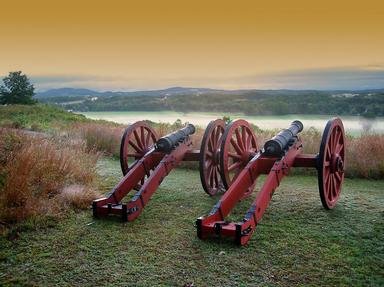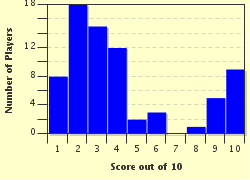Quiz Answer Key and Fun Facts
1. This general was born in the Keystone state, aka Pennsylvania. During his time at West Point, he chose Southern-born cadets as his friends and became an ardent supporter of States' Rights. When the Civil War started, he offered his services to the Confederacy and became famous for his stand at Vicksburg. Who was he?
2. On the Louisiana side of Mississippi, there is Port Hudson. Port Hudson was equally important to Vicksburg in the terms of keeping the Mississippi River open to navigation for the Confederates. Another Northern-born Confederate, this time from New York, defended the fort at the critical time of its siege by Union forces. Who was he?
3. The Battle of Franklin, fought on November 30, 1864, claimed the lives of six Confederate generals. The bodies of four of them were taken to the Carnton house and were later taken to their separate graves. One of them was a Northern-born Confederate, who had been born in the state of Ohio. Who was he?
4. The Battle of Aquia Creek is one of the lesser known Civil War battles. It was merely an exchange of fire between the Confederate batteries and the Federal navy. It was also the baptism of fire for a Northern-born Confederate, who is better remembered for his deeds in the more famous Battle of Shiloh. Who was he?
5. The Battle of Seven Pines, fought on May 31-June 1, 1862, opened the road for the emergence of General Robert E. Lee as commander of the Army of Northern Virginia. However, this battle claimed the life of a Northern-born Confederate general, from Steubenville, Ohio. Who was he?
6. The Battle of Peachtree Creek, fought on July 20, 1864 was one of the three sorties planned by General John Bell Hood, so as to relieve the beleaguered city of Atlanta from the armies of Union general William T. Sherman. There, at Peachtree Creek, a Confederate general born in Connecticut, nicknamed "Rock" by his troops, was mortally wounded. Who was he?
7. Confederate Arizona Territory was formed in 1861. The citizens in this area had many things in common with Texans, including their support for states' rights. They seceded from the Union and, with Mesilla as their capital, petitioned the Confederacy for admittance. President Jefferson Davis accepted and commissioned General Henry Hopkins Sibley to secure the area. One adoptive Texan, who had been born in the North, was given the task of protecting Mesilla. Who was he?
8. General Thomas Jonathan "Stonewall" Jackson was the first commander of the Shenandoah Valley military district, where he became famous and admired for his brilliant Valley Campaign. His headquarters in the Col. Moore house, shown in the image. The last commander of this district, a Northern-born Confederate, also the superior officer of John S. Mosby, the Partisan Ranger, stayed here during his tenure. Who was he?
9. Worthington, Ohio, was the city where this Northern-born Confederate general was born. His most famous contribution to the Confederate cause was his helping direct the fire against Fort Sumter, in the incident which started the great war. Who was he?
10. The Battle of Cockpit Point was a minor battle fought in Virginia during the second half of 1861. The Confederate commander was another Northern-born Confederate, who later served under General James Longstreet in his operations against Suffolk, as well as under General John Bell Hood in the Western Theater. Who was he?
Source: Author
DeepHistory
This quiz was reviewed by FunTrivia editor
bloomsby before going online.
Any errors found in FunTrivia content are routinely corrected through our feedback system.


